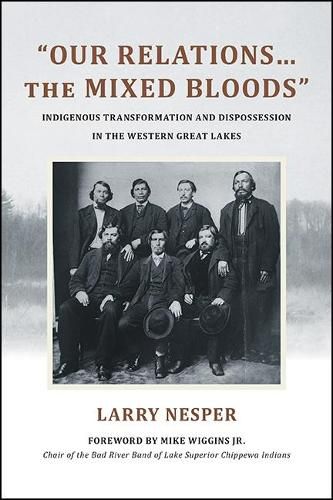Readings Newsletter
Become a Readings Member to make your shopping experience even easier.
Sign in or sign up for free!
You’re not far away from qualifying for FREE standard shipping within Australia
You’ve qualified for FREE standard shipping within Australia
The cart is loading…






This title is printed to order. This book may have been self-published. If so, we cannot guarantee the quality of the content. In the main most books will have gone through the editing process however some may not. We therefore suggest that you be aware of this before ordering this book. If in doubt check either the author or publisher’s details as we are unable to accept any returns unless they are faulty. Please contact us if you have any questions.
In the Great Lakes region of the nineteenth century, mixed bloods were a class of people living within changing indigenous communities. As such, they were considered in treaties signed between the tribal nations and the federal government. Larry Nesper focuses on the implementation and long-term effects of the mixed-blood provision of the 1854 treaty with the Chippewa of Wisconsin. That treaty not only ceded lands and created the Ojibwe Indian reservations in the region, it also entitled hundreds of mixed-bloods belonging to the Chippewas of Lake Superior, as they appear in this treaty, to locate parcels of land in the ceded territories. However, quickly dispossessed of their entitlement, the treaty provision effectively capitalized the first mining companies in Wisconsin, initiating the period of non-renewable resource extraction that changed the demography, ecology, and potential future for the region for both natives and non-natives. With the influx of Euro-Americans onto these lands, conflicts over belonging and difference, as well as community leadership, proliferated on these new reservations well into the twentieth century. This book reveals the tensions between emergent racial ideology and the resilience of kinship that shaped the historical trajectory of regional tribal society to the present.
$9.00 standard shipping within Australia
FREE standard shipping within Australia for orders over $100.00
Express & International shipping calculated at checkout
This title is printed to order. This book may have been self-published. If so, we cannot guarantee the quality of the content. In the main most books will have gone through the editing process however some may not. We therefore suggest that you be aware of this before ordering this book. If in doubt check either the author or publisher’s details as we are unable to accept any returns unless they are faulty. Please contact us if you have any questions.
In the Great Lakes region of the nineteenth century, mixed bloods were a class of people living within changing indigenous communities. As such, they were considered in treaties signed between the tribal nations and the federal government. Larry Nesper focuses on the implementation and long-term effects of the mixed-blood provision of the 1854 treaty with the Chippewa of Wisconsin. That treaty not only ceded lands and created the Ojibwe Indian reservations in the region, it also entitled hundreds of mixed-bloods belonging to the Chippewas of Lake Superior, as they appear in this treaty, to locate parcels of land in the ceded territories. However, quickly dispossessed of their entitlement, the treaty provision effectively capitalized the first mining companies in Wisconsin, initiating the period of non-renewable resource extraction that changed the demography, ecology, and potential future for the region for both natives and non-natives. With the influx of Euro-Americans onto these lands, conflicts over belonging and difference, as well as community leadership, proliferated on these new reservations well into the twentieth century. This book reveals the tensions between emergent racial ideology and the resilience of kinship that shaped the historical trajectory of regional tribal society to the present.